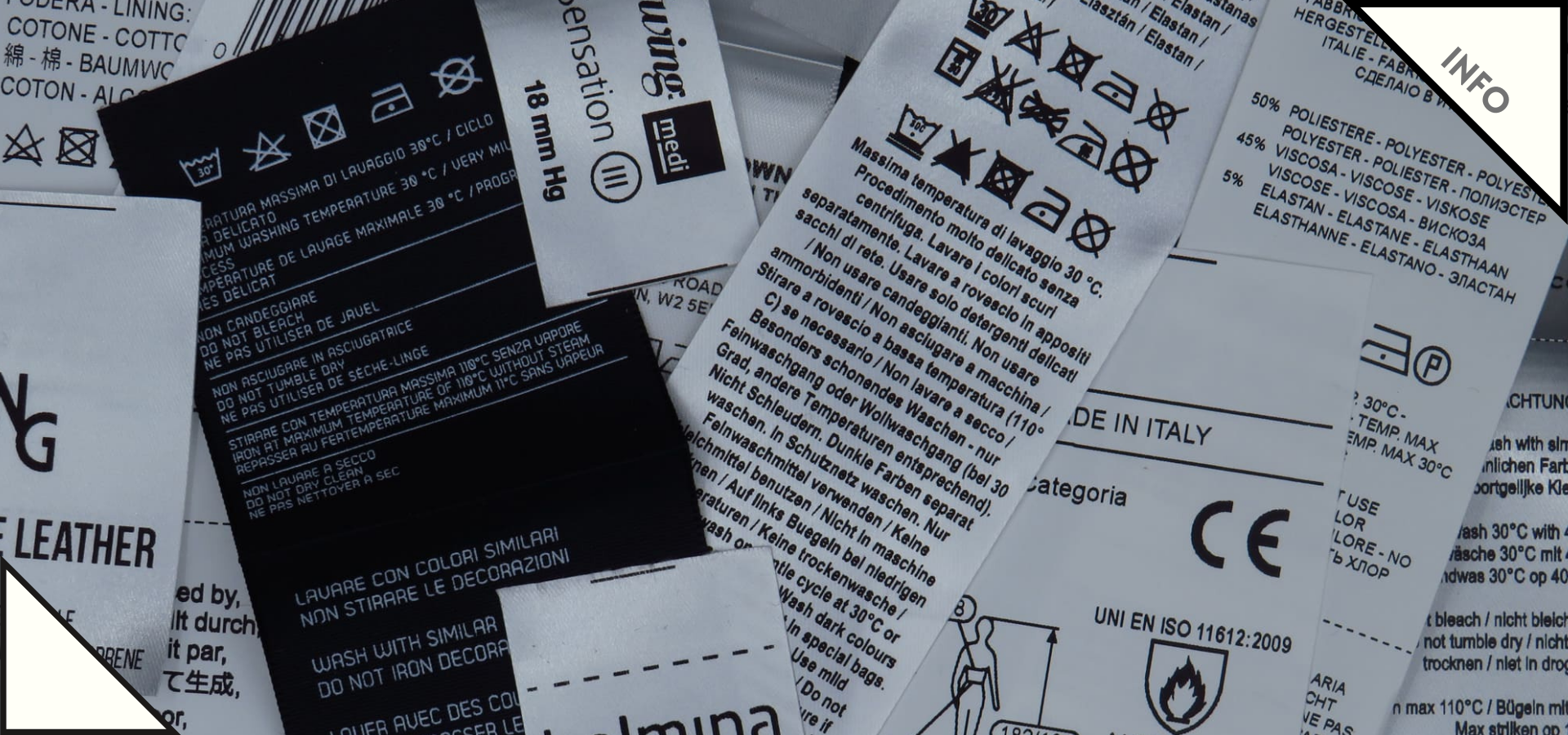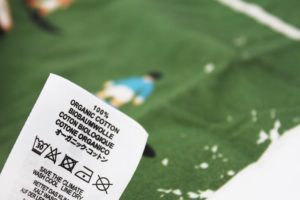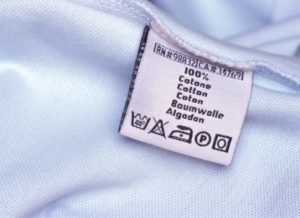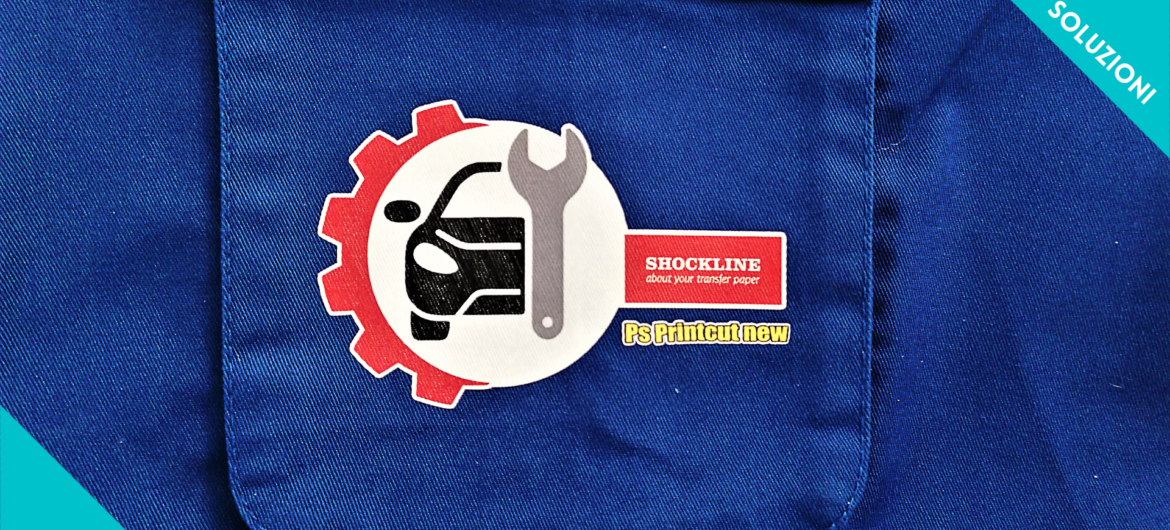You have a solvent print – cut plotter but it seems to you that the possible applications are decreasing and that there is continuous need for new technologies (and investments) to keep up, to offer new quality services and to build customer loyalty.
How many times have you thought: “what else can I do?“, “what service can I offer to earn more?“.
One of the most popular applications for this technology is certainly the printing of heatflex films for fabrics. But you may have asked yourself: “does it really resist washing?“, “how many washes?“, “at what temperature?“.
If you take some time to read this article, I can assure you two things right now:
1. The print and cut technology with a plotter is undoubtedly an excellent tool to offer high quality solutions and enter profitable market niches such as work apparell and the
Ho.Re.Ca. (hotelleria – restaurant – cafeteria) field.
2. The solution you will learn here is absolutely within your reach, and not only: it depends only on you, it will be yours, practically inimitable, unique as it is set up and standardized with your own method. You will keep your customers loyal to you.
To get info about the washing resistance of a product such as the heatflex films one usually relies on the product data sheet. Yet this topic is very vast, complex and only partially concerns the information that the manufacturer of the materials (be they printing inks, thermoadhesives or direct printing inks) provide us. Why am I saying this? Because in most cases what is supplied to us is a raw material or a semi-finished product and the resistance to washing depends on a series of factors and procedures that we printers manage, such as ink quantity and drying times, finishing processes (primers, protection) and transfer or hot polymerization parameters.
But first of all we need to understand what washing resistance actually means. Washing resistance certainly depends on the media and the ink, but these must necessarily be related to the substrate to be decorated.
With regard to fabrics, the world of Italian, European and global textiles has acquired (in most cases), shared quality standards over time, which have given rise to regulated processes and
control tests.
This made it possible, therefore, to determine the characteristics of the artifacts.
MAINTENANCE SYMBOLS AND LABELS
As a matter of fact, the most important thing we must consider are the maintenance labels, which refer to the UNI EN ISO 3758: 2012 standard. The standard establishes a system of graphic symbols intended for use in the permanent labeling of textile products to provide information to prevent irreversible damage to articles during maintenance procedures and specifies the use of these symbols in maintenance labeling.
The labels on the garments show a series of symbols that indicate how and at what temperature we can wash the garment, if we can wet wash or dry clean it, if it can be dried vertically, flat or with the dryer, if it can be ironed, etc… This is because the characteristics of each garment are different, there may be garments composed of several fabrics, coupled fabrics, particular seams, colors and various pre-treatments. In other words, a whole series of typical characteristics of a specific artifact lead to a method of “maintenance” expressed in these symbols. These symbols also represents the starting point of any specification for the supply of clothing or printing on clothing by organizations, large companies, etc.
Therefore, to give indications on the washing resistance we must start from what we have to print and subsequently wash.
Here is an example of the symbols usually found on some garments:
The basin indicates washing temperature, maximum 30°C.
The line under the basin also indicates that the washing must be a delicate process.
The triangle indicates bleaching: prohibited in this case as it is crossed.
The square with the circle inside indicates that a dryer must not be used.
It can be ironed, and finally the circle indicates dry cleaning, which in this case is also not allowed.
This time the washing temperature must be maximum at 40°C, with no indication on the process, so standard washing procedure is fine.
Bleaching is prohibited.
Do not iron, but this time dry cleaning is allowed, as well as the use of a dryer.
We are dealing with cotton in both cases, but with significantly different indications. The first observation is that if the print or the ink resist to 60°C, in any case it isn’t possile to certify this resistance: we must always give prudential indications. In the first case this will remain valid, in the second case we should test or provide a new prudential label, for example on dry cleaning. Very often these washing procedures are not possible with digital prints.
Note that in the first case we are dealing with colored cotton, in the second, white cotton.
STANDARDS AND WASH RESISTANCE TESTS
So far we have seen how to adapt our print, direct or indirect, to the garment, but it is still necessary to clear out what a washing resistance test means.
In general we have to talk about washing fastess, color fastness and resistance to rubbing.
For all these tests, which must be performed by certified laboratories, reference is made to a series of UNI – EN – ISO standards, where UNI stands for Italian, EN for European, and ISO for international standards.
The washing fastness includes tests to be performed according to the UNI EN ISO 6330: 2012 standard.
This International Standard specifies domestic washing and drying procedures for textile testing. The procedures are applicable to textile fabrics, garments or other textile articles which are subjected to appropriate combinations of domestic washing and drying procedures. This International Standard also specifies the reference detergents and ballasts for the procedures.
For example, recently many laboratory tests have been carried out to determine the washing fastness of the coupled fabrics used for the production of (non personalized) surgical masks: the standard includes variants called N1 (40°C), N2 (50°C, often used for sportswear), N3 (60°C), N4 (95°C for 30 min with steel balls), N5 (95°C for 4 hours with steel balls). In particular, in some reports that I consulted for tests on coupled fabric, the test performed was N1 (40°C) and N2 (60°C), for 1 and 5 washes.
The color fastness, on the other hand, refers to the UNI EN ISO 105-C06: 2010 standard which is the official English version of the European standard EN ISO 105-C06 (March 2010 edition). The standard specifies the methods for determining the color fastness of textiles, in all their forms and types, to domestic or commercial washing processes, which use a reference detergent. Industrial and sanitary items can be subjected to particular washing procedures which, in some respects, could be more severe.
These tests are used to determine if the fabric or print “fade”, which is completely different from the degradation or delamination of a film or print. It is very useful in case of direct printing or embroidery, less important in case of indirect, transfer or heatflex printing.
Finally, the rubbing resistance refers to the UNI EN ISO 105-X12: 2016 standard.
ISO 105-X12:2016 specifies a method for determining the resistance of the colour of textiles of all kinds, including textile floor coverings and other pile fabrics, to rubbing off and staining other materials. The method is applicable to textiles made from all kinds of fibres in the form of yarn or fabric, including textile floor coverings, whether dyed or printed. Two tests may be made, one with a dry rubbing cloth and one with a wet rubbing cloth.
Why is this standard important? It actually becomes fundamental in case of frequently used and washed garments, in case of garments with hard parts such as zippers, buttons, or in case of particularly “hard” fabrics, such as workwear. It is exactly in these cases that we must pay close attention to the type of customization we are going to propose.
At this point, it is quite clear that we are moving alone in a vast and complex world.
DIGITAL PRINTERS GUARANTEE WASHING RESISTANCE
As a matter of fact, we printers guarantee end customers, while each supplier is responsible for the single component, for example ink, embroidery thread or thermo-adhesive, since it’s not possible to know the method of use, nor the final support on which we will use these ingredients.
But to face new markets with success it is important to be aware of the territory in which one moves and of one’s own means.
If it seems clear that in the case of cotton Tshirts you can refer to the label and make sure that the semi-finished product or raw material we use can have the required performance, how can we, in our process, increase these performances to be able to offer other services?
The elements we must consider in the customization process are therefore:
– The fabric and its maintanance label for info about the minimum resistance target of the customization.
– The technology and the media. For example, the ink, the thickness, the possible application of primers or final treatments, curing in a heater or under a press and the type and quality of thermo-adhesive films in the case of transfer prints.
At this point, let’s try to draw conclusions.
To enter markets where high performance is required, we should develop a standard process that allows us to obtain perfect, repetitive and certifiable results.
In the case of direct or screen printing it is very important to use all the instructions provided by the manufacturer, such as use of primers, curing, dry environment, etc. The washing tests must also be carried out 72 hours after printing, and we can also hypothesize the use of a protection to increase the general resistance.
THERMO-ADHESIVE LABELS AND STANDARD CUSTOMIZATION PROCESS
Now let’s try to understand how to enter the workwear customization market: cotton, polyester or mixed fabrics, of variable thicknesses such as aprons, vests, trousers, overalls and shirts all with plenty of pockets, zips, seams and which must resist to a very high number of washings.
How to make digitally printed thermo-adhesive labels and what are the main aspects to take into consideration?
Here they are.
1 – The printing technology. Choose the technology and type of ink. To get the best result I will have to choose an ink that sticks perfectly to the substrate, preferably one that attacks it by dissolving it and remains encapsulated, such as a solvent-based ink, obviously with the Oeko- Tex (greenguard) certification.
2 – The thermoadhesive. Choose a suitable print-cut heat flex film which can be applied at minimum 150°C, to avoid delamination due to the re-softening of the heat flex film.
3 – The color profile. Among the various possible media (thermoadhesive), choose one that has a good ink absorption. In this case I shouldn’t tend to save color, but I have to make sure that the media absorbs a fair amount of ink, and also choose a profile that avoids a thick layer in the dark tones but at the same time ensures a good amount in the light colors. This will allow me to have colors that bind deeply to the support. After application, we can do tests with an adhesive tape to verify that the media has incorporated the ink (wait at least 12 hours).
4 – Apply a protective (after the ink has perfectly dried), making sure that it integrates perfectly with the rest and cannot in any way delaminate if stressed during washing tests even at high temperatures. Therefore, preferably apply a liquid protective by screen printing or by brush, roller or spray. After complete drying we can also perform rubbing tests at home, with a white cotton fabric, both dry and wet, rubbing at least ten times.
5 – Apply with a good quality heat press, possibly pneumatic or electric, with the possibilty to set all the parameters precisely, not only time and temperature but also pressure. Perform more than one application: times and temperatures can also vary greatly depending on the media and the amount of protective we applied.
After 72 hours we will be able to test domestic washing resistance, at 60°C or 95°C. 5 washings are enough and one sample should be kept for each wash.
Remember that the sample is yours, no one else has the same method or process as yours. By varying the color, the quantity of protective product, you can certify it or request tests from certified laboratories if you want to have an accredited document.
And now? At this point, we will be the exclusive owners of a standardized process, certain of being able to offer performances of a certain type, to face with serenity those markets that require particular attention to certain features, for instance, clothes and uniforms for bars, restaurants, hotels (Ho.Re.Ca.) or to respond to the specifications of potential customers, using a flexible technology without cliché and with low unit costs, which can undoubtedly go alongside with embroidery or professional direct screen printing.








0 Comment